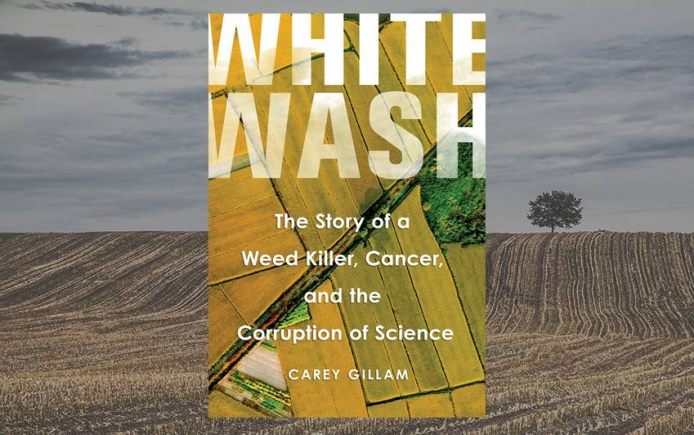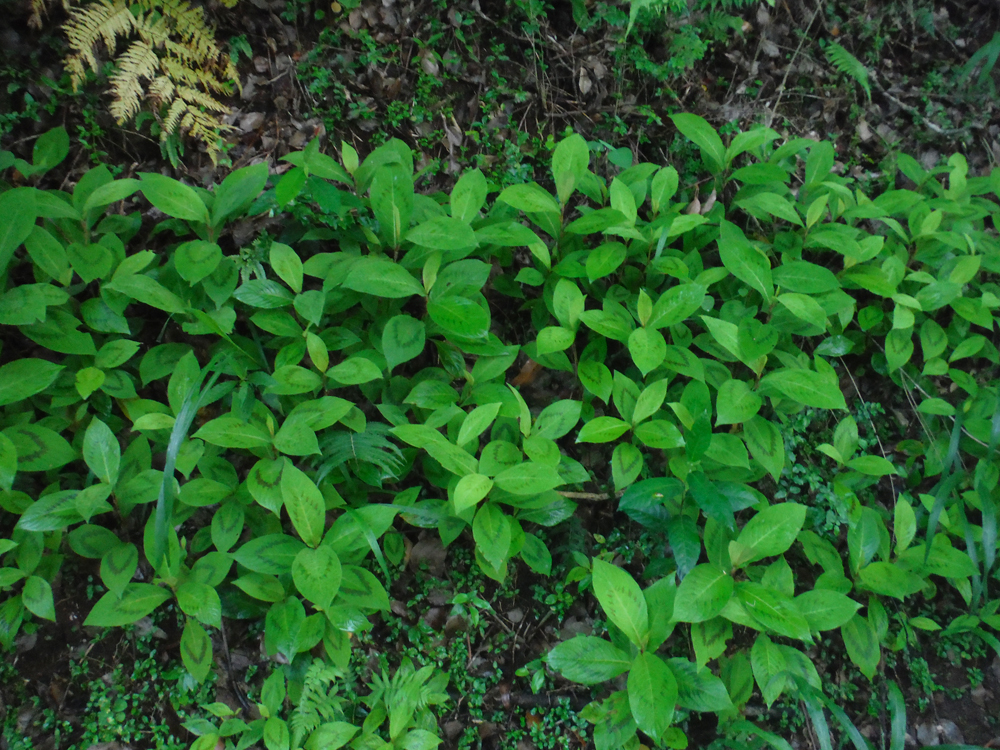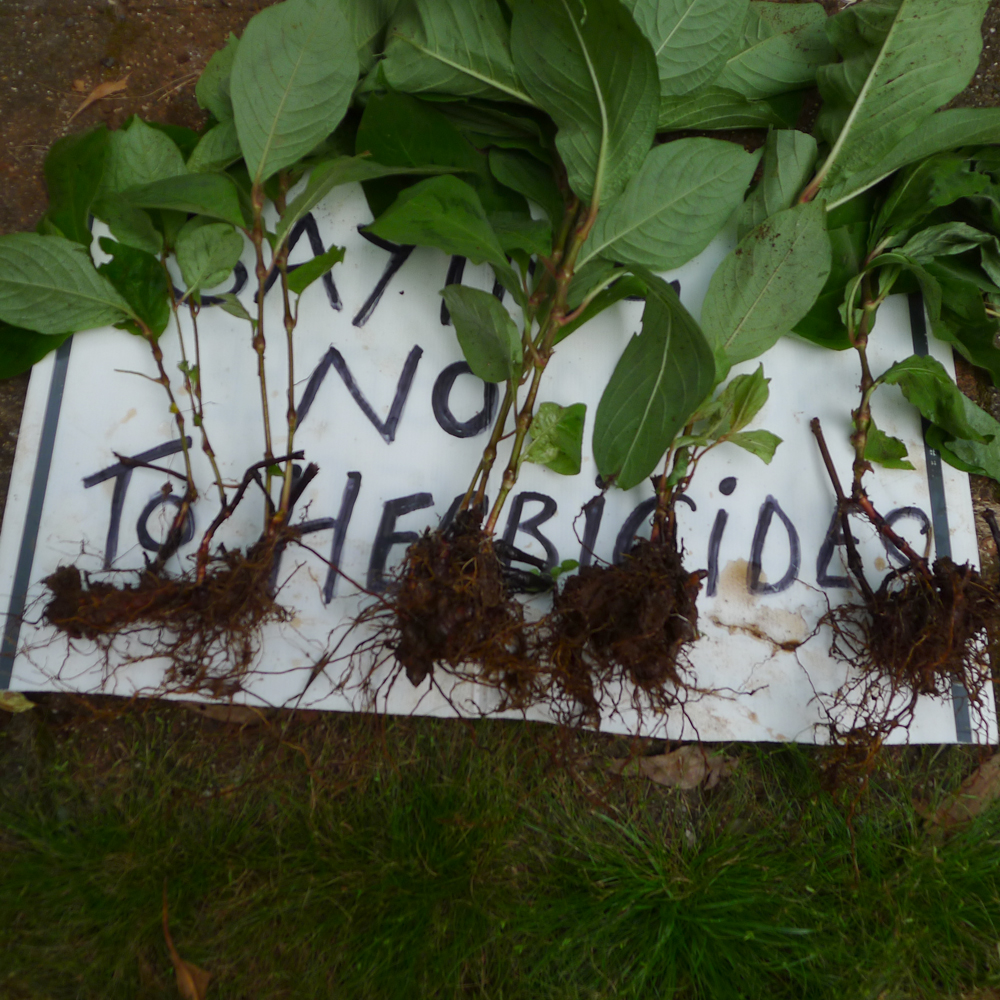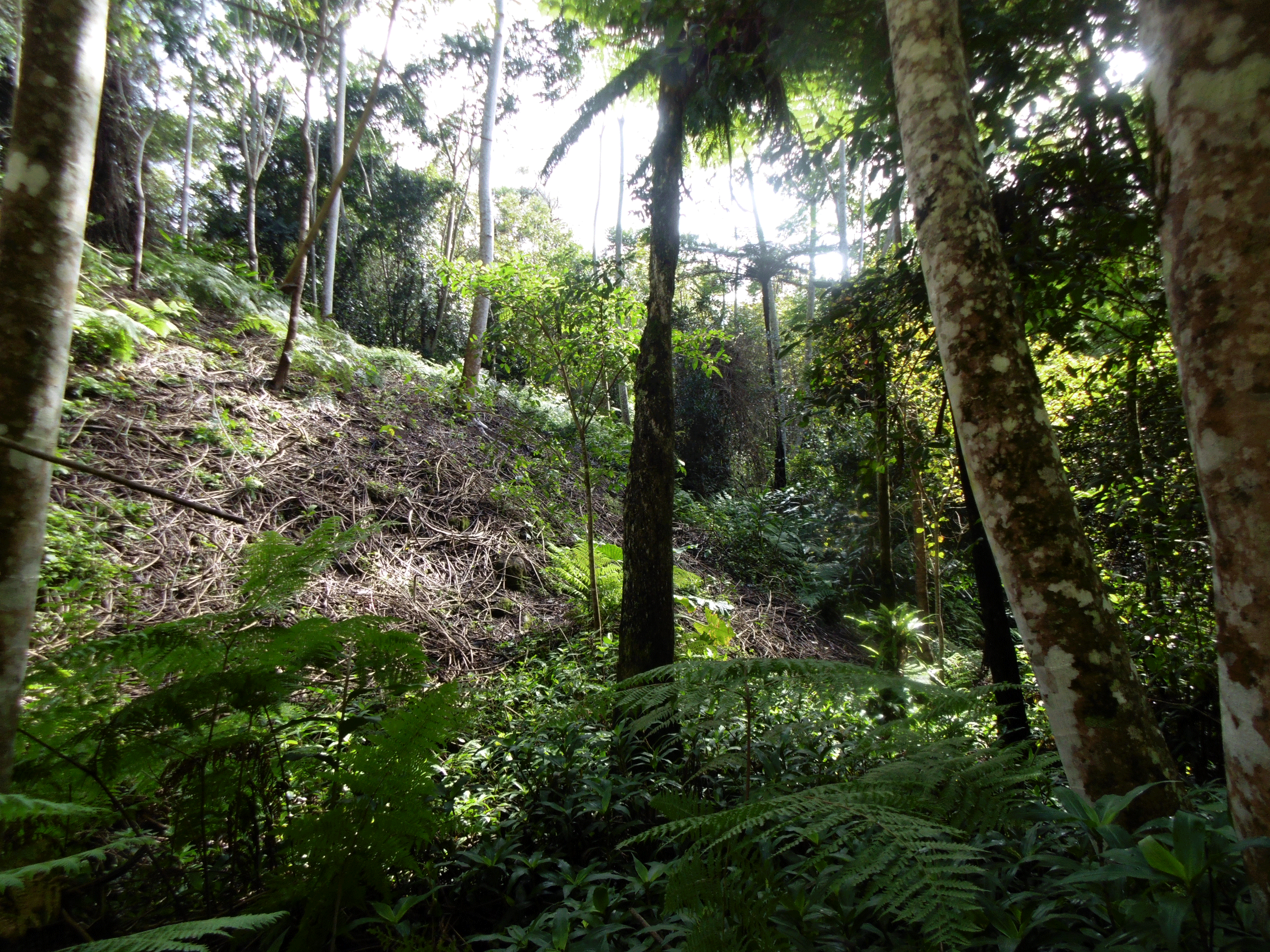Humans have been farming for 10,000 years. It was just about 60 years ago that humans started industrializing agriculture in the U.S. and around the world. After World War II, chemical companies needed a market for wartime inventions and pesticides were put to work in the fields. In the decades that followed, trade and development policy — coupled with savvy marketing by chemical companies — effectively developed an entire model of industrial agriculture.
Today, pesticides touch every aspect of our lives, from residues on our produce to increased chronic disease to biodiversity loss. It’s time for a dramatic shift in our food and farming system.
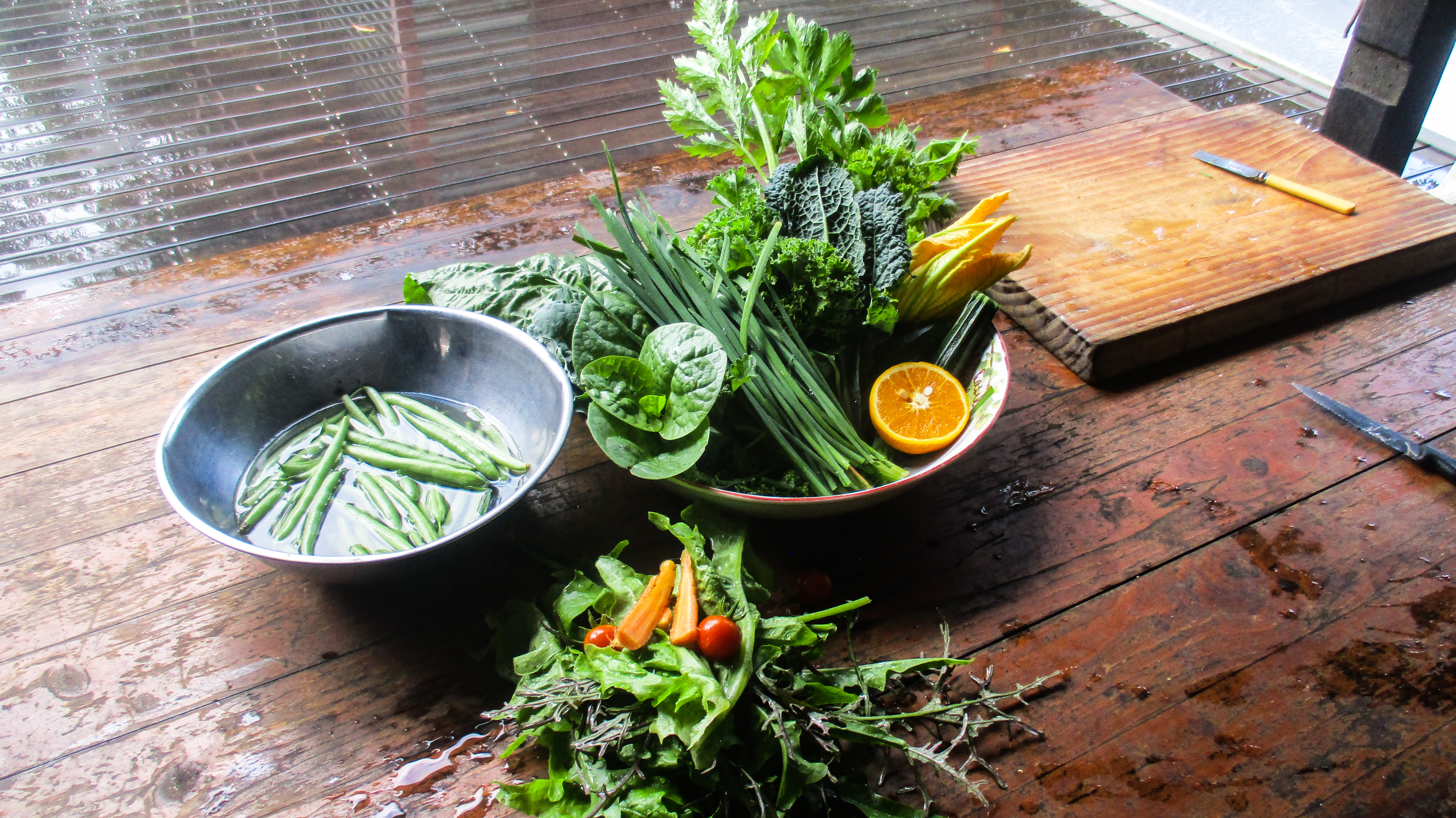
Here in our once beautiful valley the creep of dying and dead camphor and coral trees are becoming more visible by the week.
I think my current pessimism is fueled by viewing this and with the local community meetings, who are proclaiming a Telstra tower and the resulting radiation will kill bio-diversity with no mention of the increasing herbicide use.
Reality indicates our copper land-lines will no longer operate after 2020? With no maintenance and my December 2017 experience with no phone for 26 days, we have to be realistic and connect to the satellite . The Telstra tower seems irrelevant already.
While all around us 100s of litres of herbicides are being used to poison the so called flora intruders. No mention of the proven 100s of insects and 4 butterfly species that have adapted to the camphor tree.
From the Chairman at The East London Garden Society
France the latest country to ban the product, a European Parliament ban on retail sales. Why do local authorities still use it?
1,200 Percent Increase of Weed Killer in Your Body
• Researchers tested urine levels of glyphosate and its metabolite aminomethylphosphonic acid (AMPA) among 100 people living in Southern California over a period of 23 years — from 1993 to 2016
• The prevalence of human exposure to glyphosate increased by 500 percent during the study period while actual levels of the chemical, in ug/ml, increased by a shocking 1,208 percent.
Glyphosate, the active ingredient in Monsanto’s Roundup, is the most heavily used agricultural chemical of all time. It’s a mind-boggling amount of usage for one agricultural chemical, and it was only a matter of time before the wide-reaching environmental and public health implications became apparent.
Monsanto advertised Roundup as “biodegradable” and “environmentally friendly,” even going so far as to claim it “left the soil clean” — until they were found guilty of false advertising. Now It’s showing up in people, at alarming levels, with unknown effects on human health.
Study Reveals 1,200 Percent Increase in Glyphosate Levels
Researchers from University of California San Diego (UCSD) School of Medicine tested urine levels of glyphosate and its metabolite aminomethylphosphonic acid (AMPA) among 100 people living in Southern California over a period of 23 years — from 1993 to 2016. The starting year is 1994 genetically engineered (GE) crops were introduced in the U.S.
Glyphosate is used in large quantities on GE glyphosate-tolerant, and its use increased nearly fifteen fold since 1996. Glyphosate is also a popular tool for desiccating (or accelerating the drying out) of crops like wheat and oats, with the UCSD researchers noting in JAMA that Roundup is “applied as a desiccant to most small non-genetically modified grains.” So for both the GE crops and non-GE grains, glyphosate “is found in these crops at harvest.”
At the start of the study, Paul Mills, professor of family medicine and public health at the University of California San Diego, stated that very few of the participants had detectable levels of glyphosate in their urine, but by 2016, 70 percent of them did. Overall, the prevalence of human exposure to glyphosate increased by 500 percent during the study period while actual levels of the chemical, in ug/ml, increased by a shocking 1,208 percent.
It’s unknown what this means for human health but, in 2017, separate research revealed that daily exposure to ultra-low levels of glyphosate for two years led to nonalcoholic fatty liver disease (NAFLD) in rats.7 Mills stated that the glyphosate levels revealed by their JAMA study were 100-fold greater than those detected in the rat study.
In response to the featured study, Monsanto was quick to say that the amounts reported “do not raise health concerns,” and that the fact that the chemical is detected in urine is just “one way our bodies get rid of nonessential substances.” Speaking to GM Watch, Michael Antoniou of King’s College London had another take on the matter:
“This is the first study to longitudinally track urine levels of glyphosate over a period before and after the introduction of GM glyphosate-tolerant crops. It is yet another example illustrating that the vast majority of present-day Americans have readily detectable levels of glyphosate in their urine, ranging from 0.3 parts per billion, as in this study, to ten times higher – 3 or more parts per billion – detected by others.
These results are worrying because there is increasing evidence to show that exposure to glyphosate-based herbicides below regulatory safety limits can be harmful.”
Concerns over glyphosate’s toxicity have been mounting since the International Agency for Research on Cancer’s (IARC) 2015 determination that glyphosate is a “probable carcinogen.” As of July 2017, California’s Environmental Protection Agency’s Office of Environmental Health Hazard Assessment also listed glyphosate as a chemical known to cause cancer under Proposition 65, which requires consumer products with potential cancer-causing ingredients to bear warning labels.
Meanwhile, in the EU, European Commission leaders met in March 2016 to vote on whether to renew a 15-year license for glyphosate, which was set to expire in June of that year. The decision was tabled amid mounting opposition, as more than 180,000 Europeans signed a petition calling for glyphosate to be banned outright. Ultimately, more than 2 million signatures were collected against relicensing the chemical.
The European Parliament voted in favour of phasing out glyphosate over the next five years and immediately banned it for household use. As EcoWatch reported, Nathan Donley, a senior scientist with the Center for Biological Diversity noted:
“This wasn’t just a vote against glyphosate. This was a vote supporting independent science and a vote against an industry that has manipulated, coerced and otherwise soiled independent decision-making in Europe and the rest of the world.”
Another dead end inquiry.
https://www.theguardian.com/environment/2018/jun/27/senate-inquiry-threatened-species-crisis
$0 for Adani’s coal train. $516,000,000 for renewables
Malcolm Turnbull’s plan to give Adani $1 billion in public cash via NAIF (the Northern Australia Infrastructure Facility) could have been the mining giant’s golden ticket to building their monster coal mine.
But Malcolm Turnbull and Adani weren’t ready for the enormous people-powered backlash to this ludicrous handout.
GetUp members and our friends helped turn Adani’s loan into the defining issue of the Queensland State election, resulting in Adani’s handout being scrapped on the new Queensland Government’s first day in power. And over 5,000 GetUp members contacted the board of NAIF, asking them to put Adani’s request in the bin, and invest in renewable energy and other sustainable, long-term industries that won’t wreck our climate.
NAIF appear to have got the message. This week clean energy company Genex announced NAIF are investing $516M in their massive Kidston solar and hydro project — a cutting-edge renewables hub that will create work for 500 people in North Queensland.2
Large-scale renewables like this are creating better jobs for the future while helping preserve our most precious natural resources. The Turnbull Government, however, are still desperately trying to fund Adani’s Reef-killing, water-guzzling coal mine. They’ve changed the rules of Government credit agency EFIC so they can fund Adani through the backdoor by handing over money to the mining giant’s suppliers.3
We’ve landed some mighty blows against Adani, but the fight’s not over yet.
Sign the petition against any public money for Adani.
